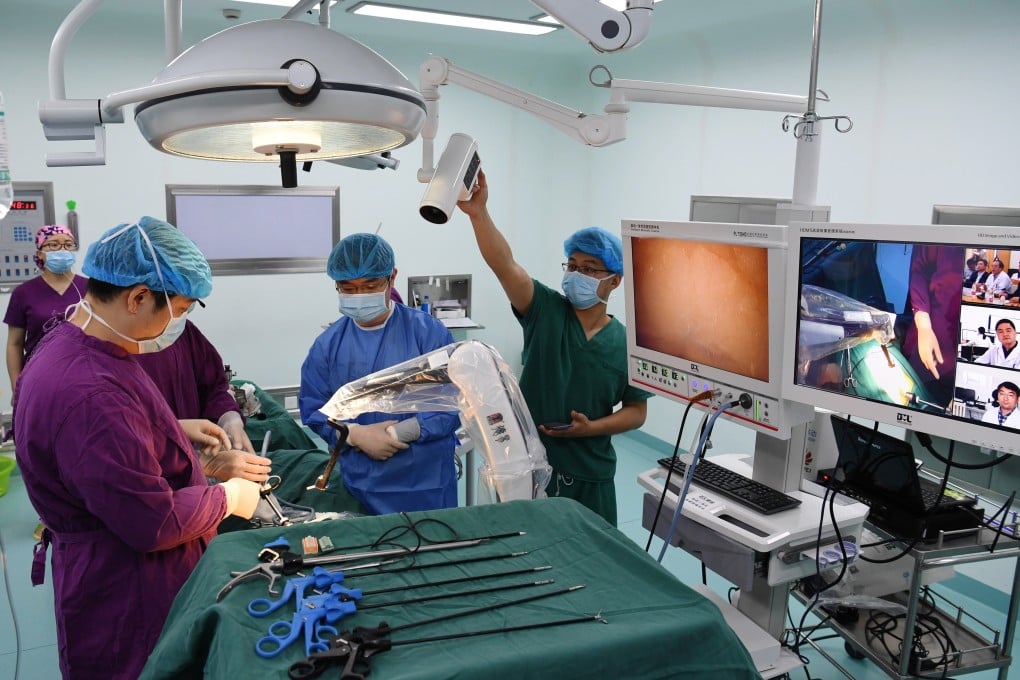How China is counting on 5G to improve health care
- Major telecoms firms are driving 5G initiatives in tele-diagnosis, remote surgeries and smart hospitals across China

This is the final instalment in a series analysing the impact of 5G mobile technology on people’s everyday lives.
In Gaozhou, a city in China’s southwestern Guangdong province that is known for lychee, longan and banana farms, finding quality medical treatment has long been an issue because of the lack of talent and resources. But that situation has recently changed in this agricultural heartland, thanks to the latest advance in mobile communications: 5G.
Surgeons at the People’s Hospital of Gaozhou got first-hand experience on how ultra-fast 5G connection works in April, when they performed an operation on a 41-year-old female patient whose congenital cardiac defect deteriorated to heart failure.
Their procedure was monitored by a team of doctors, located about 400 kilometres (248 miles) away at the Guangdong Provincial People’s Hospital, who provided instructions in real time over a 5G-linked remote consultation system.
“Try to stay away from the triangle area mapped in 3D, or else stitches could cause myocardial damage,” said the Guangdong doctors, who watched the surgery live on a high-definition screen, while two other displays showed the patient’s dynamic ultrasonography and a three-dimensional rendering of her heart. The surgeons in Gaozhou had the same set of screens in their operating room.
In China, with a population of about 1.4 billion at the end of last year, the stakes are high for health care to become one of the major applications for 5G mobile technology because the world’s second biggest economy still must contend with an acute shortage of qualified doctors and nurses.